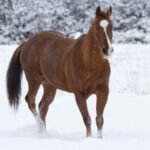Cold-climate dog breeds—from the majestic Siberian Husky to the gentle giant Bernese Mountain Dog—are renowned for their strength, intelligence, and sometimes stubborn independence. These breeds developed in harsh northern environments where survival required both collaboration with humans and autonomous decision-making. When your Malamute decides the couch is more appealing than your command to “come,” or your Samoyed pretends not to hear you calling, you’re experiencing a quintessential trait of these northern breeds: selective cooperation. This article explores why cold-climate breeds sometimes refuse to cooperate, how to understand their unique psychology, and practical strategies to build a more harmonious relationship with these magnificent but occasionally challenging companions.
Understanding the Independent Nature of Northern Breeds

Cold-climate breeds developed in environments where independent thinking was essential for survival. Unlike breeds selectively developed for complete obedience, northern dogs were working partners who sometimes needed to make their own decisions—like when a sled dog must choose a safe path across ice or a livestock guardian must determine if something represents a genuine threat. This evolutionary history means that breeds like Huskies, Malamutes, and Akitas often assess commands rather than blindly following them. Their thought process might be described as “Does this make sense to me?” rather than “I must obey.” Understanding that this trait stems from their heritage—not defiance or unintelligence—is the first step toward addressing cooperation challenges with these remarkable animals.
Recognizing Signs of Non-Cooperation Before They Escalate

Cold-climate breeds typically display subtle signals before outright refusing to cooperate. These may include “whale eye” (showing the whites of their eyes), suddenly becoming intensely interested in sniffing something, or adopting a stiff body posture when given a command. Some breeds like Samoyeds might employ what owners affectionately call the “Sammy smile”—appearing to grin while completely ignoring instructions. Akitas and Shiba Inus often adopt a dignified, almost dismissive stillness when they’re not interested in complying. Learning to recognize these early warning signs allows you to adjust your approach before full refusal occurs. The sooner you identify reluctance, the easier it is to redirect their attention and avoid a complete breakdown in communication.
Environmental Factors That Trigger Non-Compliance

Your cold-climate breed may suddenly become uncooperative due to specific environmental triggers that activate their instinctual behaviors. Temperature plays a significant role—many northern breeds become more energetic and less focused on commands during cold weather, while they may become lethargic and resistant during excessive heat. Environmental distractions like wildlife scents can trigger prey drive in breeds like Huskies, making it nearly impossible to regain their attention. Unfamiliar surroundings may activate guardian instincts in breeds like the Great Pyrenees or Caucasian Shepherd, causing them to ignore commands in favor of assessing potential threats. Understanding these environmental triggers allows you to predict potential cooperation issues and either avoid these situations or prepare alternate strategies for managing your dog’s behavior.
The Role of Proper Mental Stimulation

Cold-climate dogs were bred for physically and mentally demanding work, from pulling sleds across vast distances to guarding livestock in harsh conditions. Without adequate mental challenges, these intelligent breeds often redirect their cognitive energy into selective hearing, creative escape attempts, or elaborate refusal rituals. A bored Alaskan Malamute or Greenland Dog might develop increasingly sophisticated ways to ignore commands simply because problem-solving is intrinsically rewarding to them. Puzzle toys, scent work, tracking activities, and training that involves complex tasks rather than simple obedience can significantly reduce non-cooperative behaviors. Many owners report remarkable improvements in overall compliance when they implement daily mental enrichment routines that satisfy their dog’s need for cognitive challenges.
Physical Exercise Requirements and Cooperation

Insufficient physical exercise is perhaps the most common cause of non-compliance in cold-climate breeds. These dogs possess extraordinary endurance and energy reservoirs that require regular depletion to maintain behavioral balance. A Siberian Husky that receives only a brief daily walk may refuse commands simply because its body craves more substantial exercise. Northern breeds typically need at least 1-2 hours of vigorous activity daily—ideally including running, pulling, or swimming—to meet their biological exercise requirements. Owners frequently report that seemingly “stubborn” behaviors vanish after implementing appropriate exercise regimens. The transformation can be remarkable: dogs that once refused to come when called may become significantly more responsive once their physical needs are properly addressed.
Training Approaches Tailored to Independent Thinkers

Traditional obedience training methods often fail with cold-climate breeds because they don’t account for these dogs’ evolutionary history as cooperative partners rather than subordinates. More effective approaches emphasize mutual respect and make cooperation worthwhile from the dog’s perspective. Positive reinforcement using high-value rewards (often protein-based for these historically meat-dependent breeds) can transform training sessions from power struggles into collaborative activities. Many northern breed experts recommend “capturing” desired behaviors when they occur naturally and heavily rewarding them, rather than forcing compliance. Training sessions should be kept brief, varied, and engaging—ideally incorporating elements of play and problem-solving that appeal to these dogs’ intelligence while avoiding the repetitive drills that quickly bore them.
The Impact of Social Structure on Compliance

Cold-climate breeds typically have strong social instincts developed through pack living or working in teams. Their cooperation often depends on how well you’ve established a mutually respectful relationship that makes sense within their social framework. Breeds like the Alaskan Malamute and Siberian Husky may refuse commands from people they don’t perceive as consistent, fair leaders who provide for their needs. Unlike some other dog types, northern breeds rarely respond well to intimidation or force—instead, they require earned authority based on consistent boundaries, predictable routines, and fair treatment. Many owners find that addressing basic relationship dynamics—establishing clear household rules, providing structure, and developing genuine trust—resolves cooperation issues more effectively than any specific training technique.
Health Considerations Behind Sudden Non-Compliance

When a previously cooperative cold-climate dog suddenly begins refusing commands, health issues should be considered before assuming behavioral problems. Hip dysplasia, common in larger northern breeds like the Newfoundland and Saint Bernard, can make activities like sitting or climbing painful, resulting in apparent disobedience. Hypothyroidism, prevalent in breeds including Samoyeds and Alaskan Malamutes, often manifests as lethargy and reduced responsiveness to commands. Cold-climate breeds are also prone to specific eye conditions that can affect vision and make them less responsive to visual cues or hesitant in new environments. A thorough veterinary examination, potentially including thyroid testing and joint evaluations, should be considered when cooperation problems develop suddenly or progress despite appropriate training approaches.
Age-Related Changes in Cooperation Patterns

A dog’s willingness to cooperate often follows predictable patterns throughout its lifespan, with cold-climate breeds exhibiting particularly pronounced developmental stages. Puppies typically show natural compliance that transitions into challenging adolescent behavior between 6-18 months, when selective listening becomes prominent. This adolescent phase tends to last longer in northern breeds—sometimes extending well into the third year of life for breeds like the Akita or Tibetan Mastiff. Senior cold-climate dogs often develop more selective cooperation due to sensory decline, minor discomforts, or cognitive changes. Understanding these age-related patterns helps set realistic expectations and adjust training approaches appropriately. Many owners report that with consistent, patient handling, most cold-climate breeds eventually mature into more cooperative adults after an extended “teenage” phase of selective compliance.
When Refusing Commands Becomes Dangerous

While some non-compliance can be managed or tolerated, certain situations require reliable responsiveness for safety reasons. A Husky or Malamute that refuses to come when called near traffic or a Newfoundland that won’t exit water when commanded presents serious safety risks. Addressing these critical compliance issues requires specialized training approaches focusing on emergency recalls and safety commands. Many experienced northern breed owners establish a separate, rarely used emergency command with extraordinary high-value rewards (like whole cooked chicken) that’s practiced regularly but only deployed in genuine emergencies. Working with trainers experienced specifically with northern breeds, rather than general dog trainers, often yields better results for these safety-critical behaviors, as they understand the unique psychology of these independent-minded dogs.
Seasonal Changes in Behavior and Trainability

Cold-climate breeds often exhibit dramatic seasonal variations in their willingness to cooperate, reflecting their evolutionary adaptation to the extreme seasonal changes of northern environments. Many owners report increased energy, heightened prey drive, and reduced compliance during fall and winter months when these dogs would historically be in their working season. Spring often brings shedding-related discomfort that can manifest as irritability or reduced cooperation. Female intact dogs may show cyclical changes in trainability related to their hormonal cycles. Understanding these natural rhythms allows owners to adapt their expectations and training approaches seasonally. Some trainers recommend focusing on advancing training during the more focused summer months and maintaining skills during the high-energy winter season when new learning may be more challenging for these breeds.
Building Cooperation Through Relationship Rather Than Obedience

The most successful approach with cold-climate breeds often involves shifting focus from obedience to cooperative partnership. These dogs evolved working alongside humans rather than under direct control, making relationship quality the foundation of willing cooperation. Activities that strengthen bonds—like hiking together, participating in dog sports that utilize natural abilities, or even simple daily rituals that build connection—often improve compliance more effectively than formal training sessions. Many experienced owners report that their northern dogs respond best when they feel they’re making choices within a secure relationship framework rather than simply following commands. This approach honors these breeds’ heritage as working partners and often yields more reliable real-world cooperation than strict obedience training alone could achieve.
When to Seek Professional Assistance

While many cooperation issues with cold-climate breeds can be addressed through appropriate exercise, mental stimulation, and relationship-based training, some situations warrant professional intervention. Persistent refusal of basic commands despite consistent training, aggressive responses to commands, or anxiety-based non-compliance may require specialized help. When seeking professional assistance, it’s crucial to find trainers or behaviorists with specific experience with northern breeds, as methods effective with more biddable breeds often prove counter-productive with independent Arctic dogs. Breed-specific rescue organizations can often recommend qualified professionals who understand the unique psychological makeup of these dogs. Many behavioral specialists now offer remote consultations, making expertise in these specialized breeds accessible even in areas where local trainers may lack northern breed experience.
conclusion

Living with cold-climate breeds means embracing a relationship based on mutual respect and understanding rather than expecting unquestioning obedience. These magnificent animals, shaped by centuries of partnership with humans in the world’s harshest environments, bring unparalleled loyalty, intelligence, and character to our lives—along with their distinctive approach to cooperation. By honoring their heritage, meeting their substantial physical and mental needs, and building genuine connections, we can forge relationships with these northern companions that transform apparent stubbornness into one of their most endearing qualities: thoughtful, deliberate partnership. The journey may require more patience than with other breeds, but the reward is a truly unique bond with some of the most remarkable dogs on earth.







